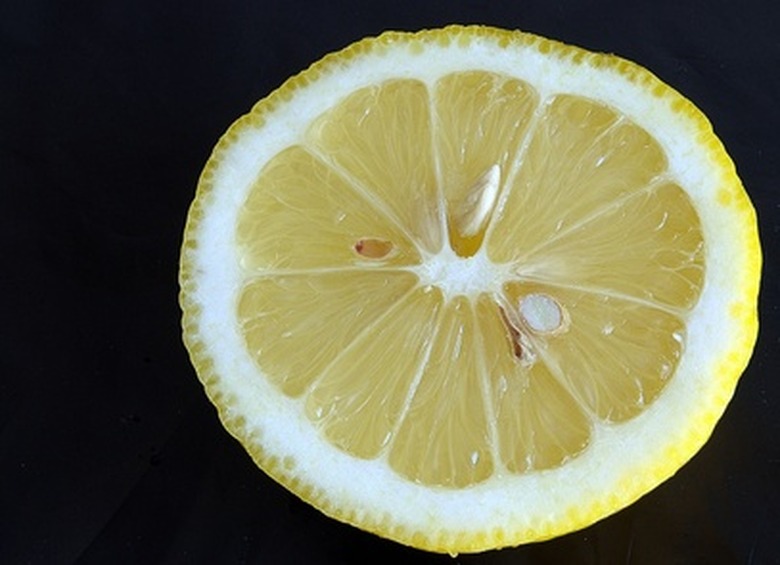How To Calculate Theoretical H3O
In pure water, a small number of the water molecules ionize, resulting in hydronium and hydroxide ions. A hydronium ion is a water molecule that has taken on an extra proton and a positive charge, and thus has the formula H3O+ instead of H2O. The presence of a large number of hydronium ions lowers the pH of a water-based solution. pH is a measure of the acidity of a solution and is a logarithmic reflection of the amount of hydronium ions present in the solution. pH measurements can range from 0 to 14. You can use this information to calculate the theoretical concentration of hydronium ions in any solution.
Step 1
Note the pH of the solution in question. Usually you can read the label of the solution or look up the pH of common substances in a chemistry book or online reference. If it is an unknown solution with an unknown pH, use a pH meter or conduct a chemical titration to determine its pH.
Step 2
Solve the pH equation for the "hydronium ion concentration" variable.
pH = – log (Hydronium Ion Concentration), so
Hydronium Ion Concentration = 10^(-pH)
(^ = symbol that means to the power of)
Step 3
Plug the pH value of your solution into the equation to reveal the concentration of hydronium ions in the solution. For example, consider a solution with a pH of 2.
Hydronium Ion Concentation = 10^-2 = 0.01 moles/liter
There are 0.01 moles of hydronium ion per liter of your solution.
Cite This Article
MLA
Banas, Timothy. "How To Calculate Theoretical H3O" sciencing.com, https://www.sciencing.com/calculate-theoretical-h3o-6039130/. 24 April 2017.
APA
Banas, Timothy. (2017, April 24). How To Calculate Theoretical H3O. sciencing.com. Retrieved from https://www.sciencing.com/calculate-theoretical-h3o-6039130/
Chicago
Banas, Timothy. How To Calculate Theoretical H3O last modified August 30, 2022. https://www.sciencing.com/calculate-theoretical-h3o-6039130/
